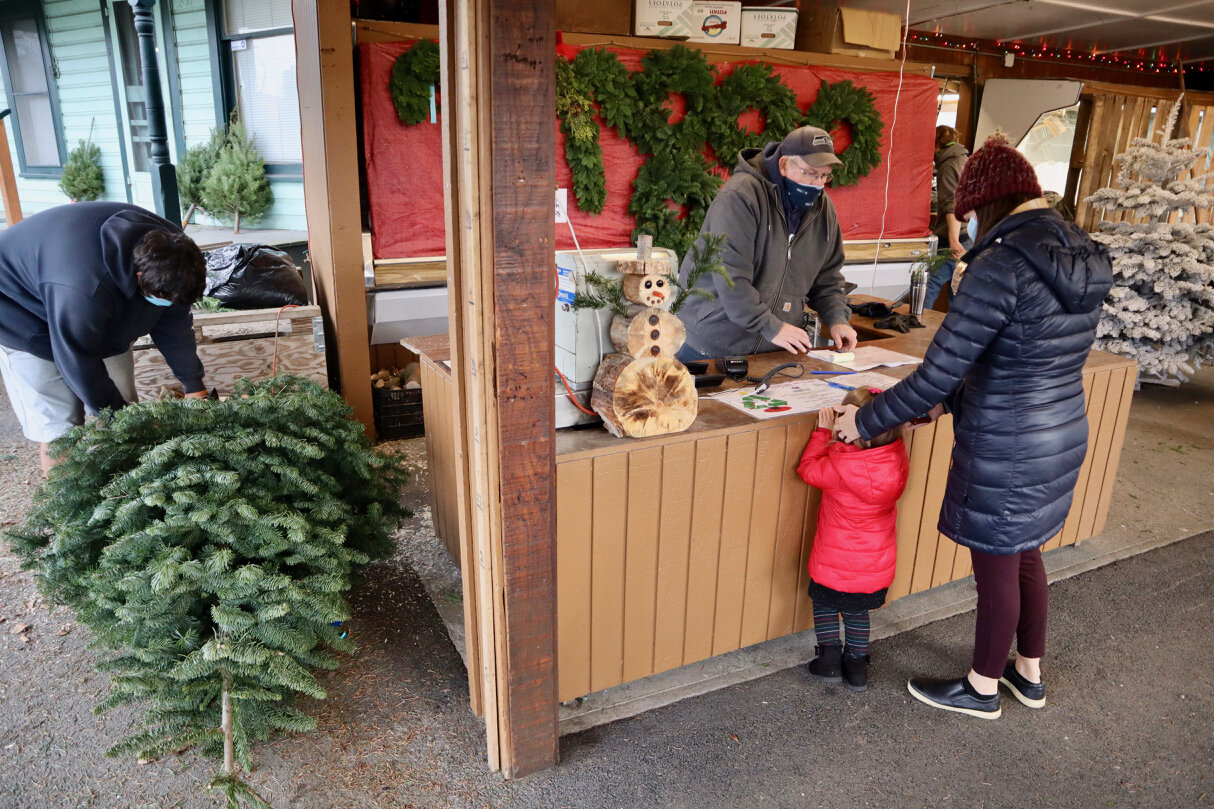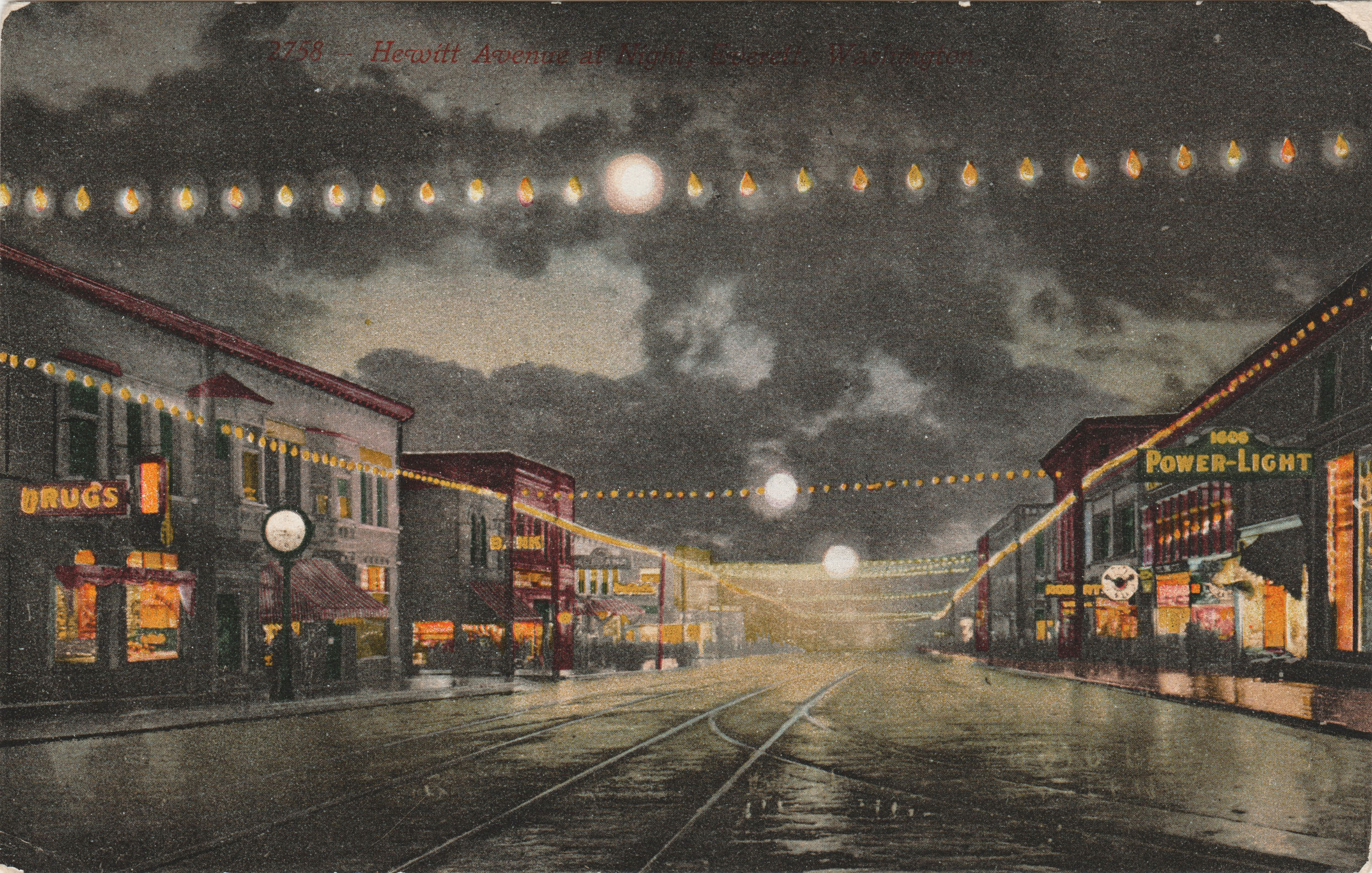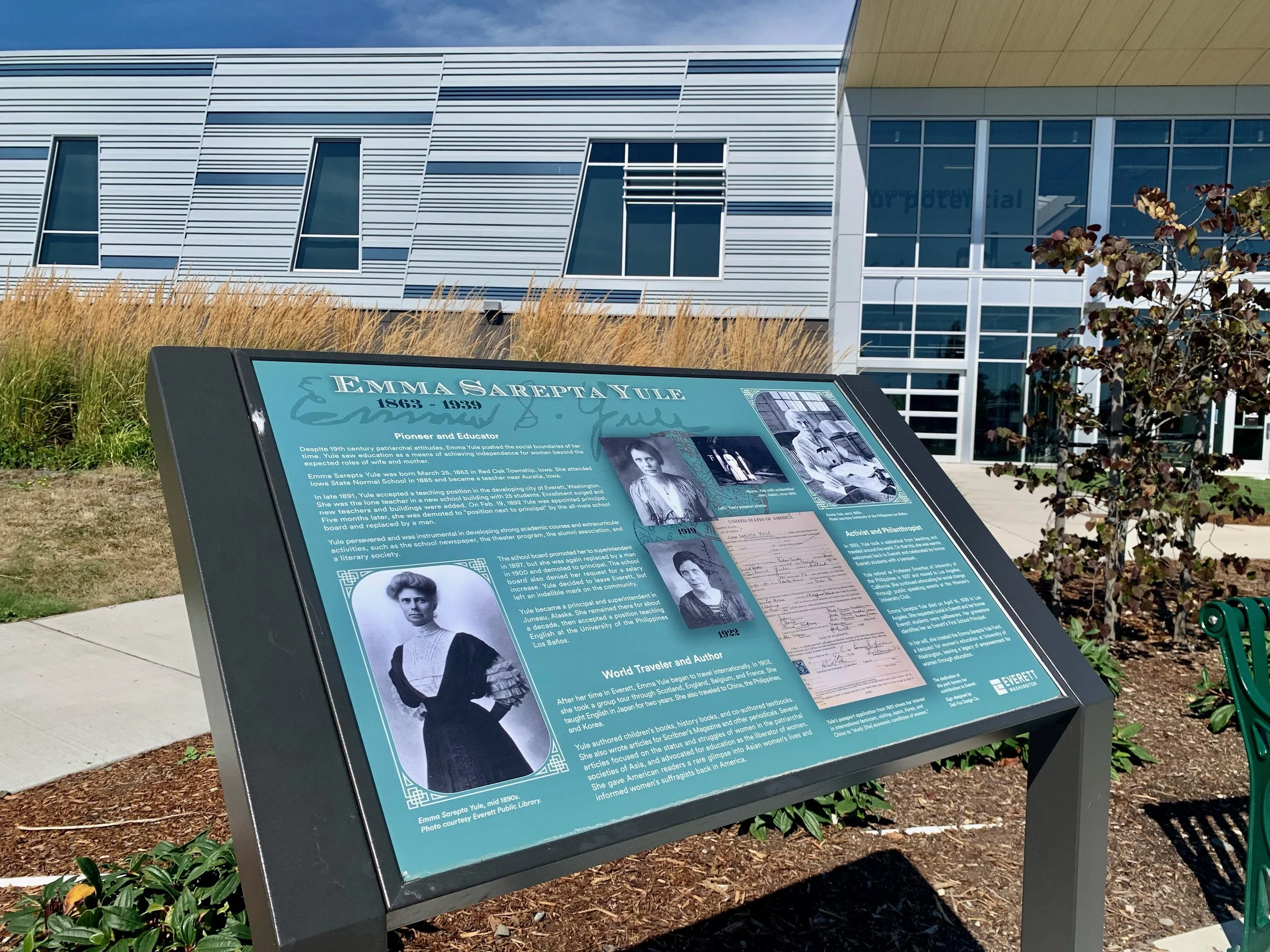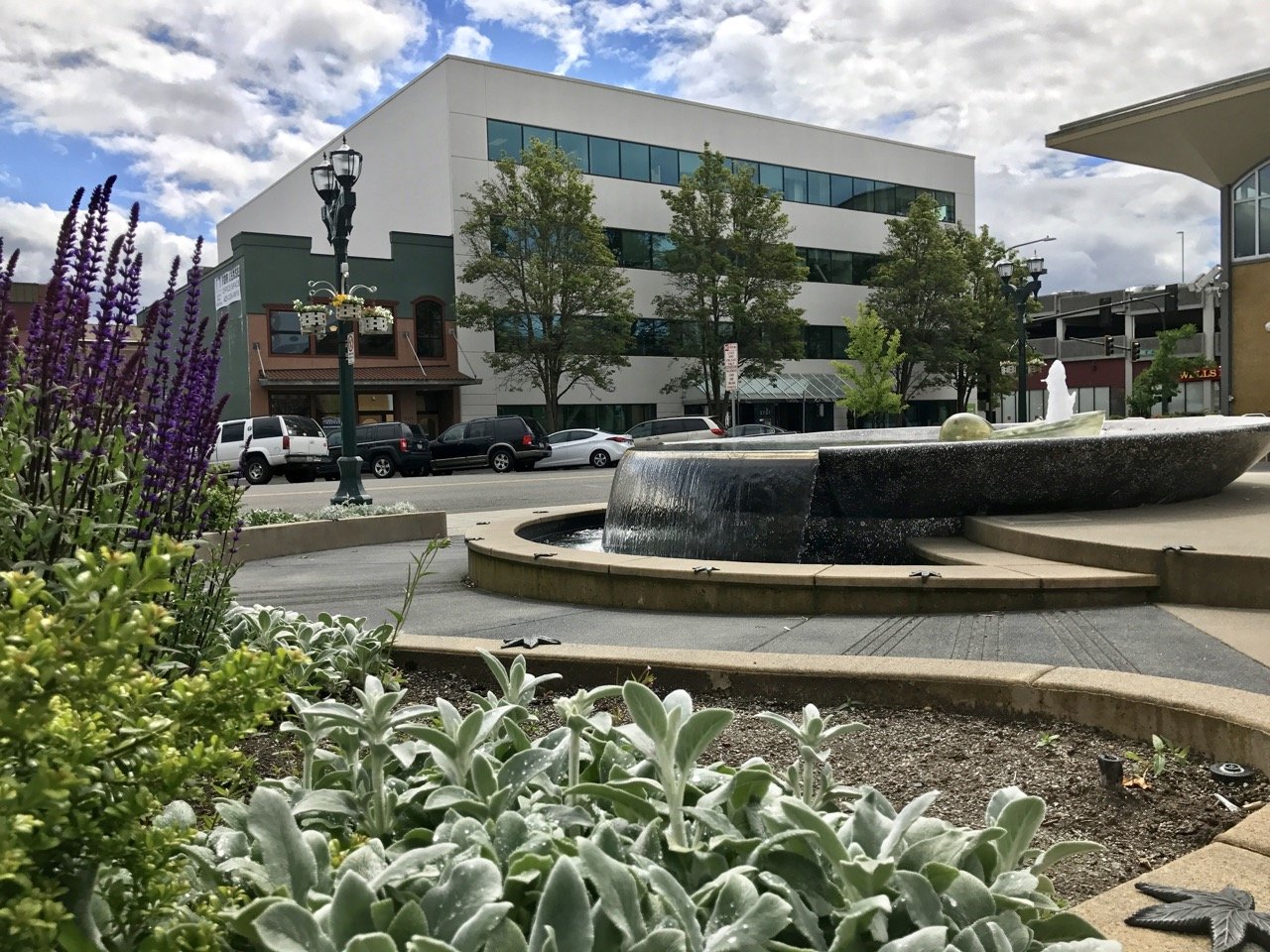Editor’s Note: Originally Published September 26, 2018. Republished November 23, 2022.
Yesterday afternoon I stood under the shade of a tall tree at Cyprus Lawn Cemetery on Everett Mall Way. At my feet was a small flat headstone, marking the grave of Alexander Singelow, 1877- 1964. I leaned down and brushed away the pine needles covering the bronze marker. “Alex” I said, “You’ll never believe where I just was.” I had just come from 1810 Hewitt Avenue, the former spot of the Star Theater.
When motion pictures hit Everett, Singelow was one of the first to hop on the trend. A Norwegian immigrant, he moved to Everett in 1900 and opened a saloon with his brother in 1906. Soon he began showing films in the saloon a few nights a week, fascinated by the new form of entertainment.
Then in 1909, with the threat of prohibition on the horizon, Singelow got out of the saloon business, and opened the Star.
The entrance of the Star in 1912 // Courtesy of the Everett Public Library
There were already eight venues showing movies in Everett. Most were old stores that had been hastily converted into theaters and the rest were live venues that occasionally showed films. The Star Theater was neither; it was built to be a cinema.
The entrance was beautifully adorned with rows of electric lights underneath tall archways and sculpted architecture. The lights lead to the box office, flanked on both sides by two sets of double doors, and on the ground an intricate tile mosaic leading to the entrance.
But Singelow didn’t just show movies, he made them. With a hand crank film camera, he would explore the streets of downtown Everett, documenting whatever he could, and then show it in his own theater. He began to travel to Seattle and Portland, collecting footage and selling it to newsreels.
Singelow in front of the Star in 1914 // Courtesy of the Everett Public Library
His theater had a short life. In the late 1920s the economy began to plummet, and there was no room for silent cinemas in the new age of sound movies. The doors closed for good in 1927.
Singelow moved away from Everett to become a cameraman for Fox.
When I went searching for the Star I expected to find an empty lot, because I thought I would have remembered the remarkable façade of the theater. I was right about one thing; the old front with its beautiful columns and lights is long gone, but the building itself remains.
Currently it is home to C&G Antiques. I was looking for markers of the old cinema but wasn’t having luck. Unable to find any signs of the former architecture, I was ready to give up.
I turned to leave, and then I looked down.
To my amazement I was standing right on top of the 109-year-old mosaic tiles. Cracked and worn, and obscured by the new storefront on top of them, they still proudly display the symbol of the Star.
The location of the Star Theater today. 1810 Hewitt Ave
At Singelow’s grave I told him the building was still standing, and that it was remembered. I told him that he was remembered too. After the theater closed he left to pursue his career as a filmmaker. In 1931 he produced and directed a feature length documentary titled “Nomadie”. The film was a travel log through Norway, Denmark and Sweden, and included footage of fishermen and polar bear hunters.
Theatrical poster for Singelow's documentary. 1931 // IMDB
Afterwards he continued to work as a cinematographer and photographer in Seattle, where he died in 1964. Despite his many travels, he was buried in Everett, the town that started his career, the home of his theater.
David Blakeslee grew up in south Everett. He spends a lot of time at the library.
























